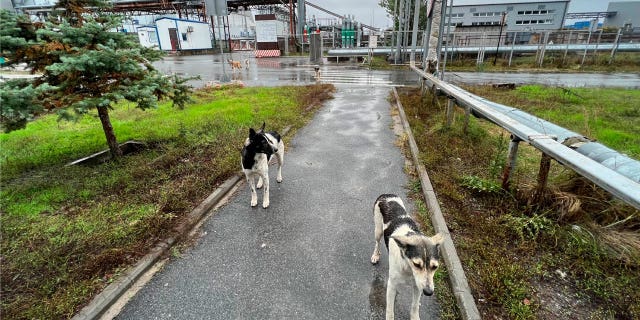More than 35 years after the world’s worst nuclear accident, Chernobyl’s dogs roam the ruined and abandoned buildings in and around the closed facility, somehow still able to find food, reproduce, and survive.
Scientists hope that studying these dogs can teach humans new tricks about living in even the harshest and most degraded environments.
They published the first of what they hope will be many genetic studies on Friday in the journal Science Advances, focusing on 302 free-roaming dogs living in an officially designated “exclusion zone” around the disaster site. They identified populations whose differing levels of radiation exposure may have made them genetically distinct from each other and from other dogs around the world.
UKRAINE ASKS UN TO REMOVE RUSSIA FROM CHERNOBYL TO PREVENT “NUCLEAR CATASTROPHE”
“We had this golden opportunity” to lay the groundwork for answering a crucial question: “How do you survive in a hostile environment like this for 15 generations?” said geneticist Elaine Ostrander of the National Human Genome Research Institute, one of the study’s many authors.
Fellow author Tim Mousseau, a professor of biological sciences at the University of South Carolina, said dogs “provide an incredible tool for examining the impacts of these kinds of environments” on mammals in general.
Chernobyl’s environment is singularly brutal. On April 26, 1986, an explosion and fire at the Ukrainian power plant caused radioactive fallout to escape into the atmosphere. Thirty workers were killed soon after, while the long-term death toll from radiation poisoning is estimated to eventually run into the thousands.

The survival of wild dogs near the Chernobyl disaster site in Ukraine may give researchers insight into what humans might be able to do in similar situations. (Timothy Mousseau via AP)
The researchers say most of the dogs they are studying appear to be descended from pets that residents were forced to leave when they evacuated the area.
Mousseau has been working in the Chernobyl region since the late 1990s and started collecting blood from dogs around 2017. Some of the dogs live in the power plant, a dystopian industrial environment. Others are about 9 miles or 28 miles away.
At first, Ostrander said, they thought the dogs might have mixed so much over time that they’d be pretty much the same. But through DNA, they could easily identify dogs living in areas of high, low, and medium levels of radiation exposure.
“It was a huge milestone for us,” Ostrander said. “And the amazing thing is that we can even identify the families” — about 15 different ones.
Now researchers can start looking for alterations in the DNA.
“We can compare them and we can say, OK, what’s different, what’s changed, what’s mutated, what’s evolved, what’s helping you, what’s hurting you at a DNA level?” Ostrander said. This will involve separating inconsequential DNA changes from intentional ones.
CHERNOBYL NUCLEAR POWER PLANT IN UKRAINE DISCONNECTED FROM THE ELECTRICITY NETWORK, RAISING FEARS OF RADIATION LEAKS
The scientists said the research could have broad applications, providing insights into how animals and humans may live now and in the future in regions of the world under “continuous environmental attack” and in the high-radiation environment of space.
Dr. Kari Ekenstedt, a veterinarian who teaches at Purdue University and was not involved in the study, said it is a first step in answering important questions about how constant exposure to higher levels of radiation affects large mammals. For example, you said, “Will their genomes change at a rapid rate?”
The researchers have already begun follow-up research, which will mean more time with the dogs at the site about 60 miles from Kiev. Mousseau said he and his colleagues were there as recently as last October and saw no war-related activity. Mousseau said the team approached a few dogs, naming one Prancer because she hops excitedly when she sees people.
CLICK HERE TO GET THE FOX NEWS APP
“Even though they are wild, they still enjoy human interaction very much,” she said, “Especially when food is involved.”
